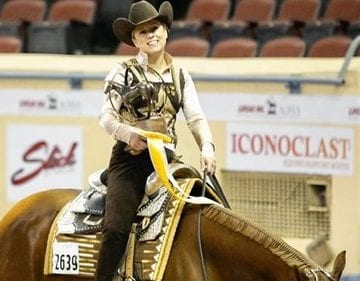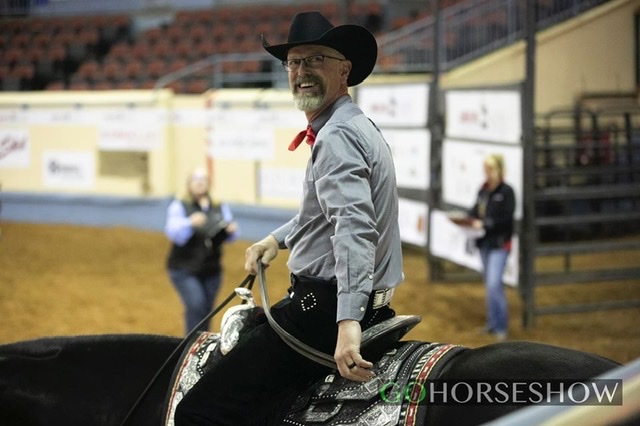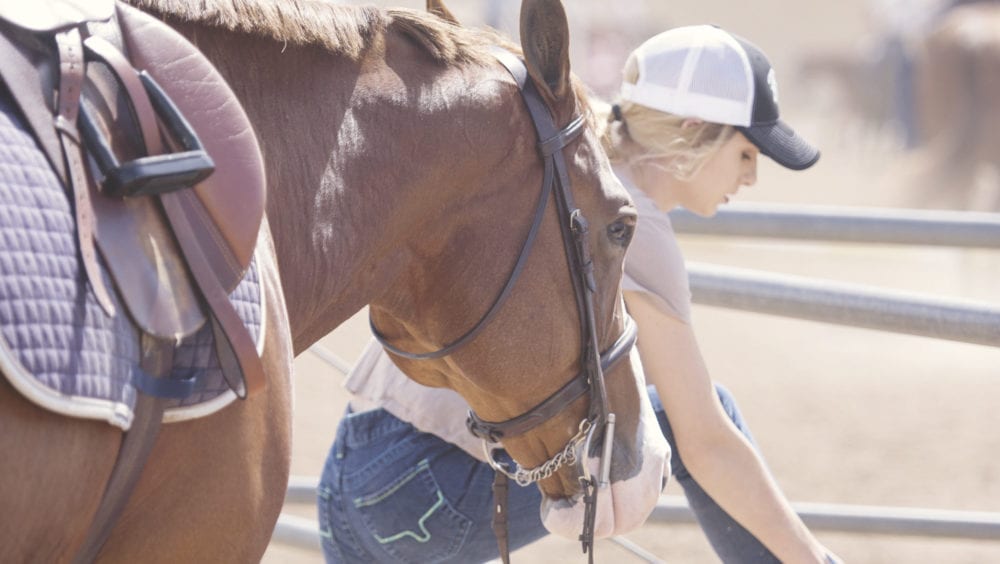With the level of competition in today’s horse show world, many competitors keep their horses with a trainer year-round to ensure their horse is at their very best. Trainers spend long hours fine-tuning horses until they are performing at the height of their ability.
In recent years, multiple opinions have developed over how much a client should practice with their horse before entering the show ring. Some say clients should put numerous rides on their horses weekly, while others say fewer rides are better. In reality, it is the trainer’s opinion based on the needs of both the client and the horse.
GoHorseShow asked AQHA trainers, Kelly McDowall, Kellie Hinely, and Shannon Vroegh, how often they prefer to see their clients practice with their horse.
 Speaking with Shannon Vroegh from Vroegh Show Horses, she explained, “I think that the amount of practice time greatly depends on the age of the horse for starters. An older horse can handle more practice times than one that is not finished. I like our clients to do once a week at home if they can because I feel the majority of what needs to be learned happens at a horse show, and I need the time on the horses at home. Show ring experience is the hardest thing to learn because you need to learn to correct for things under pressure, and neither the rider or the horse is under pressure at home.”
Speaking with Shannon Vroegh from Vroegh Show Horses, she explained, “I think that the amount of practice time greatly depends on the age of the horse for starters. An older horse can handle more practice times than one that is not finished. I like our clients to do once a week at home if they can because I feel the majority of what needs to be learned happens at a horse show, and I need the time on the horses at home. Show ring experience is the hardest thing to learn because you need to learn to correct for things under pressure, and neither the rider or the horse is under pressure at home.”
She continued explaining, “Also, the level of rider matters, if they are experienced riders, once a week is plenty, and, if they are inexperienced, once a week is also plenty because inexperience can create bad habits in the horses. Now, don’t get me wrong, we will do camps where we ride three and four days at a time to get ready for major horse shows, but other than that, I find it unnecessary to ride more than once a week.”
 Kellie Hinely, from Trendsetter Performance Horses, offered a different point of view, “I have a variety of clients from youth to amateur to select. I find that my amateur clients have much less time to practice than the retired select and youth (due to family and work). I believe that practice helps performance, but I also understand that family comes first, and work is what funds the horses. With that said, for my clients that have a multitude of things on their plate, I work hard to make sure that their horses are prepared and ready for them to get on and show.”
Kellie Hinely, from Trendsetter Performance Horses, offered a different point of view, “I have a variety of clients from youth to amateur to select. I find that my amateur clients have much less time to practice than the retired select and youth (due to family and work). I believe that practice helps performance, but I also understand that family comes first, and work is what funds the horses. With that said, for my clients that have a multitude of things on their plate, I work hard to make sure that their horses are prepared and ready for them to get on and show.”
Lastly, speaking with Kelly McDowall, of McDowall Quarter Horses, he stated that, “The amount of practice I want for a horse and rider team depends entirely on both the horse and the rider. Horses that are seasoned and have earned their ‘masters degree,’ I feel comfortable with my clients riding them as much as possible. There is not anything they can do to those horses that I can’t fix.”
McDowall continues, “Some of my clients are talented enough that the horse benefits just as much from my client riding them compared to if I were in the saddle. I feel like the more practice a client can get, especially in the equitation, horsemanship, and trail, the better. They have to work through the good, the bad, and the ugly.
 Kelly adds, “When working with younger horses, I tend to let a more experienced rider practice more than an inexperienced one. The less confusing the experience is for the young horse, the better. Putting a rider who has problems seeing their strides in a trail pattern on a horse who itself can’t find their stride, will cause problems in the long run.”
Kelly adds, “When working with younger horses, I tend to let a more experienced rider practice more than an inexperienced one. The less confusing the experience is for the young horse, the better. Putting a rider who has problems seeing their strides in a trail pattern on a horse who itself can’t find their stride, will cause problems in the long run.”
He clarified, “When working with my select amateurs, I encourage them to ride as much as possible. Once you get over the age of 50, taking a few weeks off means it takes a little bit to get back into the rhythm of things. Usually, the horses my select riders compete with are more than experienced and know what their job is.”








